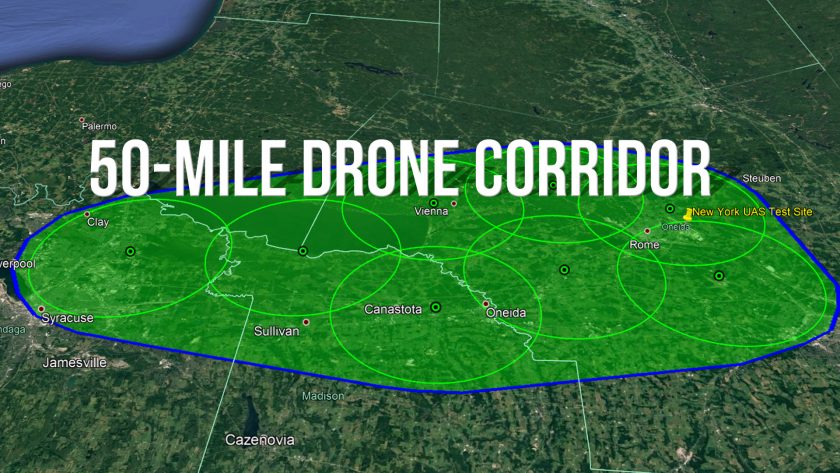The US Federal Aviation Administration (FAA) has given authorisation for the New York Unmanned Aircraft Systems (UAS) Test Site, managed by the Northeast UAS Airspace Integration Research (NUAIR) Alliance, to fly beyond visual line of sight (BVLOS) across 35 miles of airspace within New York’s 50-mile drone corridor. Current regulations require drone operators to always have a pair of eyes on the drone, limiting the ability to fly long distances. The ability to safely fly BVLOS is the key to unlocking the full potential and economic advantage of routine commercial drone operations like medical and package deliveries.
In 2019, NUAIR and the Test Site received their first BVLOS authority for an eight-by-four mile stretch of airspace from the New York UAS Test Site, at Griffiss International Airport, south to the State Preparedness Training Center in Oriskany. This new airspace authority extends west of Griffiss towards Oneida Lake increasing their overall BVLOS airspace to 35 miles.
NUAIR will utilize the ground-based surveillance systems (GBSS) installed throughout the corridor to monitor air traffic and detect intruder aircraft for BVLOS operations that are taking place at or below 400 feet. Visual observers may also be deployed during BVLOS operations to assure safety of operations.
“We have a long track record of safe UAS test flights and real-life implementation, including BVLOS operations,” said NUAIR chief of operations Tony Basile. “This new BVLOS airspace authorization will allow us to test more advanced, long-range flights and help us prove BVLOS operations can be done safely – the key component in realizing the true economic advantage of commercial drone operations.
NUAIR has conducted over 3,800 UAS test flights at the New York UAS Test Site, within New York’s 50-mile Drone Corridor, equating to more than 950 flight hours since operations began in 2014. This new authorization will help advance the reality of routine commercial drone operations and continue to draw companies from across the globe to Central New York and the Mohawk Valley regions.
(Image: NUAIR)
For more information visit:
www.nuair.org




